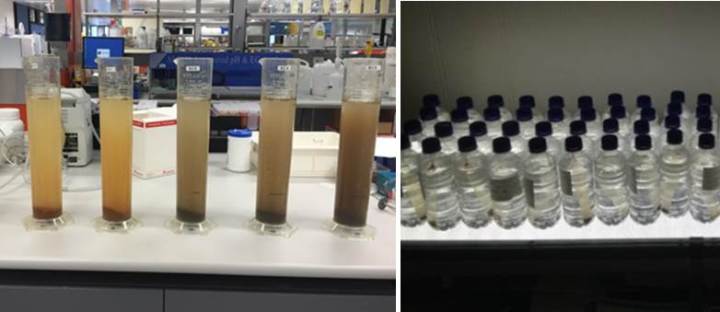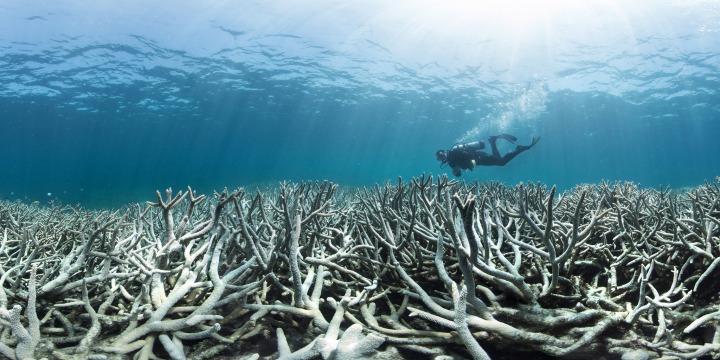Rivers deliver sediment from land to the ocean. This sediment contains nutrients which can feed microscopic algae in water. But, if there is too much sediment and nutrients, delivered by floods from land-based erosion, algal blooms can occur that have negative effects on the Great Barrier Reef.

The challenge is that sediment comes from many different locations and we need to know which types of sediment deliver the most nutrients and have the biggest impact. Once we know this, management plans can be developed to target the key hotspots of sediment in the catchment and reduce its effect on the Great Barrier Reef.
Researchers at the Australian Rivers Institute, in collaboration with the Department of Environment and Science at the Queensland Government, have developed a new technique to rapidly identify the most polluting sediments. When used in conjunction with knowledge of sediment erosion in the landscape, this technique will allow managers to focus on restoring areas where erosion would have the largest impact downstream.

- Sediment forming a flood plume and an example of gully erosion, which generates large quantities of sediment. Photo: Andrew Brooks, Griffith University
“We are using naturally occurring microscopic algae, called phytoplankton, to identify sediment sources which may cause nutrient problems in coastal waters. Algae are an important part of these ecosystems, but nutrients in sediment can make them grow rapidly and bloom. We are able to measure how fast algae grow when exposed to sediments and their associated nutrients collected from different sources, work out what role sediment nutrients play, and predict the effect each source may have on blooms” says Dr Hannah Franklin, from the Australian Rivers Institute.
This new technique has made two important advances.
First, the new technique allows researchers to simulate a flood. They produce sediment from a range of soils and land uses and place it inside flasks of algae growing in the laboratory. This avoids the complications of working in the field under flood conditions and means the study can be done in a much more controlled way. Researchers can measure the effect of each type of sediment on algal growth within just 3 days. Many flasks can be run at once and many different types of sediment can be screened simultaneously from different locations in a catchment. This is a stepping stone to understanding which sediments will cause algal blooms. Ultimately, managers could apply this technique in their local area to check which type of sediment has the greatest potential to negatively affect their coastal waters.

Second, the new method provides a way to work out which soil properties may be responsible for algal blooms, based on our small scale screening. Dr Alexandra Garzon-Garcia, of Department of Environment and Science explains:
“We measured the nutrient properties of a range of sediments collected from two Great Barrier Reef catchments, the Johnstone and Bowen River catchments. We then compared the rate of algal growth to the nutrient properties of each sediment. We were able to directly link key nutrient properties with algal growth. With this knowledge we can then make predictions in other catchments and identify locations with similar soil properties we need to target for restoration as well.”
The Great Barrier Reef is currently facing a number of threats, including increased nutrient and sediment runoff during floods. Restoring the land will help reduce the threats to the Reef. Around 40% of sediments tested from the Johnstone and Bowen catchments were found to have the potential to contribute to algal blooms. These did not always come from the areas of highest erosion, this means that we need to ensure that we target areas to control both sediment erosion and nutrient erosion. But what can we do to reduce erosion?
Trials are currently underway, across a range of organisations with interests in reef health, to work out the best methods to control erosion from different parts of the landscape, including:
- Re-establishing vegetation, such as trees, to bind sediment with plant roots;
- Large scale engineering solutions, using earth moving machinery to fill in gullies which produce large amounts of sediment; and,
- Reducing grazing intensity on erosion prone soils.
This new screening technique could be used elsewhere in Australia and the world as an important first step to identify the location of high-risk nutrient sources associated with sediments to guide targeted catchment restoration. Targeted catchment restoration can improve the cost-effectiveness of management and shorten the time it takes to see a water quality improvement.

This work has been published in Science of the Total Environment:
Franklin, H. M., Garzon-Garcia, A., Burton, J., Moody, P. W., De Hayr, R. W., & Burford, M. A. (2018). A novel bioassay to assess phytoplankton responses to soil-derived particulate nutrients. Science of the Total Environment, 636, 1470–1479. https://doi.org/10.1016/j.scitotenv.2018.04.195
Garzon-Garcia, A., Burton, J., Franklin, H. M., Moody, P. W., De Hayr, R. W., & Burford, M. A. (2018). Indicators of phytoplankton response to particulate nutrient bioavailability in fresh and marine waters of the Great Barrier Reef. Science of the Total Environment, 636, 1416–1427. https://doi.org/10.1016/j.scitotenv.2018.04.334
Cover photo credit: The Ocean Agency / XL Catlin Seaview Survey / Richard Vevers